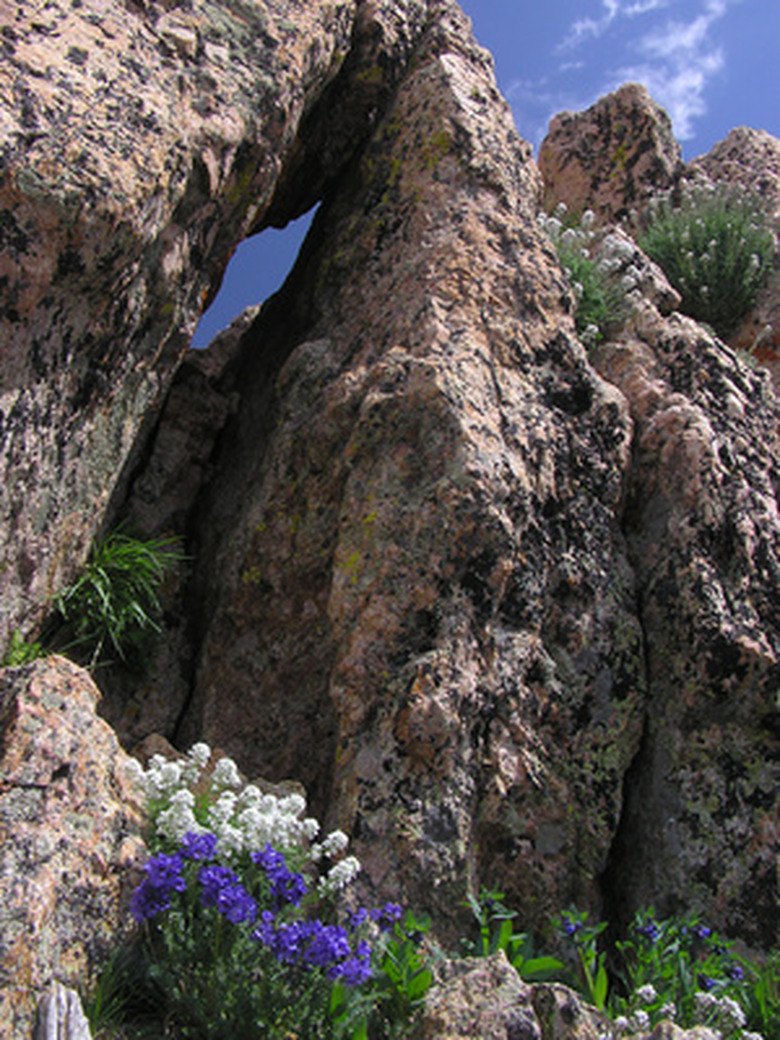Wildflower Planting In Arizona
Arizona receives nearly 300 days of sunshine each year, the highest in the U.S. Different wildflowers grow on the plateau that occupies one-third of Arizona in the northern part of the state, than those that thrive in the heat of the arid deserts of the southern two-thirds of the state. You'll have the most success by planting wildflowers that have evolved to prosper in your part of Arizona.
Time to Plant
In Arizona, as in the rest of nature, wildflower seeds germinate all times of the year, depending on the flower and the weather. It's best to plant them when the rainy season comes. If you live in southern Arizona, the rains typically come in the form of thunderstorms in July and August. If you live in northern Arizona, you will have spring rains.
- Arizona receives nearly 300 days of sunshine each year, the highest in the U.S.
- Different wildflowers grow on the plateau that occupies one-third of Arizona in the northern part of the state, than those that thrive in the heat of the arid deserts of the southern two-thirds of the state.
- If you live in southern Arizona, the rains typically come in the form of thunderstorms in July and August.
In the cold Arizona plateau, sow and water annual wildflowers after the danger of frost has passed in the spring. Don't water them if you plant them in the fall, and don't expect them to germinate until the following spring.
Sow perennials any time. If you plant them in the winter, cover them carefully, but do not water. If you water them, the seedling roots will be too shallow to survive a hard freeze. Water the seeds when the soil reaches 60 degrees F in the spring. Plant warm season grass seeds of buffelgrass, red brome and Arizona cottontop when the soil is at least 60 degrees F.
- In the cold Arizona plateau, sow and water annual wildflowers after the danger of frost has passed in the spring.
Soil
If the soil in your area lacks nutrients, give it a boost by shoveling in compost, or use it as a mulch. If your land has been previously farmed, do not till the soil, because it will bring weed seeds to the surface to compete with your wildflowers. If you have to till the soil because you are starting a new garden, wait until the weeds appear, which takes one or two weeks. Remove the weeds, water and weed again before you sow your seeds.
How to Sow
If your soil is low in organic matter, cover it with a mixture of sand and compost or well-composted manure before you sow the seeds. Scatter the seed evenly by hand. Mix the seed with sand to help you scatter a small amount of seed over a large area. Cover an area twice, walking south to north, then west to east. Use a rake to cover the seeds 1/8 inch deep with top soil. Some seeds will remain on top; they only need light and water to germinate.
- If the soil in your area lacks nutrients, give it a boost by shoveling in compost, or use it as a mulch.
- If your soil is low in organic matter, cover it with a mixture of sand and compost or well-composted manure before you sow the seeds.
If you want to grow seedlings to transplant, sow and water the seeds 4 inches deep in pea-sized gravel mixed with fine soil. The gravel will protect the seeds from the birds, sun and wind. Moisten the gravel every day. Thin thick stands of seedlings to one every 6 inches.
Mulch
Many wildflowers are light and many have evolved to be scattered by the wind. It's important to keep the seeds in place, though. Mulch helps keep the seeds in place; it also adds nutrients and moistens the soil. The best mulch is soil, but any organic matter will do, including weed-free straw, aged sawdust or leaves. Sheets or burlap bags will help keep birds away from the seeds, but only use them for two or three weeks. If a thick straw mulch rots, it can suppress seeds. In windy areas and on steep slopes, keep the soil in place with a binder made of cornstarch or psyllium, or finely ground plantago seeds. Put the binder in place, then water.
- If you want to grow seedlings to transplant, sow and water the seeds 4 inches deep in pea-sized gravel mixed with fine soil.
- Sheets or burlap bags will help keep birds away from the seeds, but only use them for two or three weeks.
Watering Seeds
If your area lacks rain, water newly sown seeds twice a day for three weeks to keep them damp. If the emerging seedlings dry out, they will die; water them twice a day for another three weeks. As the roots get deeper, water the flowers less often. Water twice a week after the first six weeks, then once a week for a month, and then monthly until it freezes. When native wildflowers are mature, water them only when they are not receiving rainfall.
